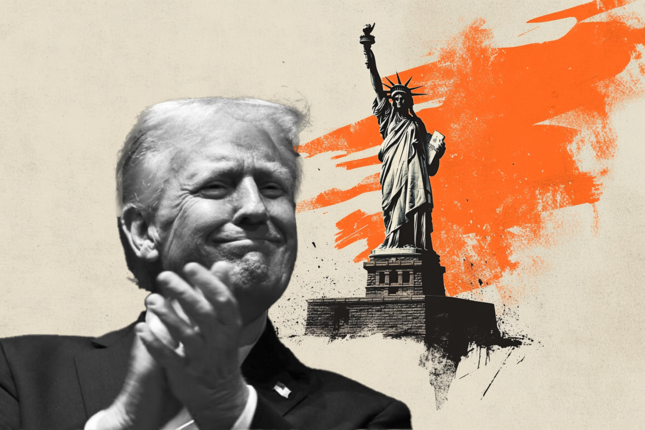Gold softer as markets test chances for more rate cuts from the Fed
- Gold price briefly fell below the $3,000 mark in early Monday trading.
- Bullion should still be considered as the safe bet for a stagflation scenario in the US.
- Gold keeps trying to recover back to its opening price near $3,040.
Gold price (XAU/USD) is facing again some selling pressure towards the American trading session, trading at $3,025 at the time of writing on Monday after falling 2% intraday in early trading as the trade war spirals out of control. Bullion was able to show resilience and pared back earlier selling pressure with Stocks, the US Dollar (USD) and yields all dropping lower on Monday. With China issuing its own retaliatory tariffs against the United States (US), markets are holding their breath for any further response from other countries.
Meanwhile, investors will shift their focus to the US inflation data this week. Slowly but surely, the focus will now shift to the US economic data, which will bear its mark from the Donald Trump presidency. Markets will want to assess the impact of US President Donald Trump politics and how much it weighs on the US economic data. This Monday, traders are even pricing in five interest rate cuts from the Federal Reserve (Fed) this year.
Daily digest market movers: Trump backers are starting to get uneasy
- American billionaire hedge fund manager and chief executive officer of Pershing Square Capital Management William Albert Ackman asked President Trump on X to pause the current trade tariffs in order to first broker a trade deal. Ackman warns that Trump is losing business leaders' confidence, Reuters reports.
- The CME FedWatch tool shows chances for an interest rate cut by the Fed in May standing at 49.3%, shooting up from 33.3% on Friday as rate cut bets grow. For June, a rates remaining steady scenario is out of the options. Only rate cuts are being penciled in with a 53.5% chance of policy rate being cut to the 3.75%-4.00% range from the current 4.25%-4.50%.
- China’s central bank, the People’s Bank of China (PBOC), added Gold to its reserves for a fifth straight month in March, deepening its bet on the precious metal as a haven asset amid rising global trade and geopolitical turmoil. Gold held by the PBOC rose by 0.09 million troy ounces last month, according to data released on Monday. The central bank’s recent run of buying started in November, after a six-month hiatus that followed an 18-month buying spree, Bloomberg reports.
Gold Price Technical Analysis: Nothing to see here
Bullion is trying to contain the situation with the global market rout really spreading out. Certainly, many Bullion bulls will have bought any offer below $3,000, which is why Gold quickly recovered back above $3,000 intraday. Look for the nearby double resistance around $3,060 that could limit the Gold price briefly.
Looking up, a double resistance sits around the $3,060 area, with $3,057 as a technical level and the Daily Pivot at $3,063. Should that level be broken down, the road is open for the intraday R1 resistance at $3,111. Further up, the current all-time high can be seen as the last upside level for now at $3,167.
On the downside, the pivotal level at $3,004 and the S1 support at $2,990 have been torn down briefly. Clearly, many buyers were interested in scooping up Gold at these levels. Should Gold fall back below $3,000, the pivotal level at $2,955 and the S2 support at $2,942 should be able to refrain Gold from falling below $2,940.

XAU/USD: Daily Chart
Tariffs FAQs
Tariffs are customs duties levied on certain merchandise imports or a category of products. Tariffs are designed to help local producers and manufacturers be more competitive in the market by providing a price advantage over similar goods that can be imported. Tariffs are widely used as tools of protectionism, along with trade barriers and import quotas.
Although tariffs and taxes both generate government revenue to fund public goods and services, they have several distinctions. Tariffs are prepaid at the port of entry, while taxes are paid at the time of purchase. Taxes are imposed on individual taxpayers and businesses, while tariffs are paid by importers.
There are two schools of thought among economists regarding the usage of tariffs. While some argue that tariffs are necessary to protect domestic industries and address trade imbalances, others see them as a harmful tool that could potentially drive prices higher over the long term and lead to a damaging trade war by encouraging tit-for-tat tariffs.
During the run-up to the presidential election in November 2024, Donald Trump made it clear that he intends to use tariffs to support the US economy and American producers. In 2024, Mexico, China and Canada accounted for 42% of total US imports. In this period, Mexico stood out as the top exporter with $466.6 billion, according to the US Census Bureau. Hence, Trump wants to focus on these three nations when imposing tariffs. He also plans to use the revenue generated through tariffs to lower personal income taxes.
Forex News
Keep up with the financial markets, know what's happening and what is affecting the markets with our latest market updates. Analyze market movers, trends and build your trading strategies accordingly.















